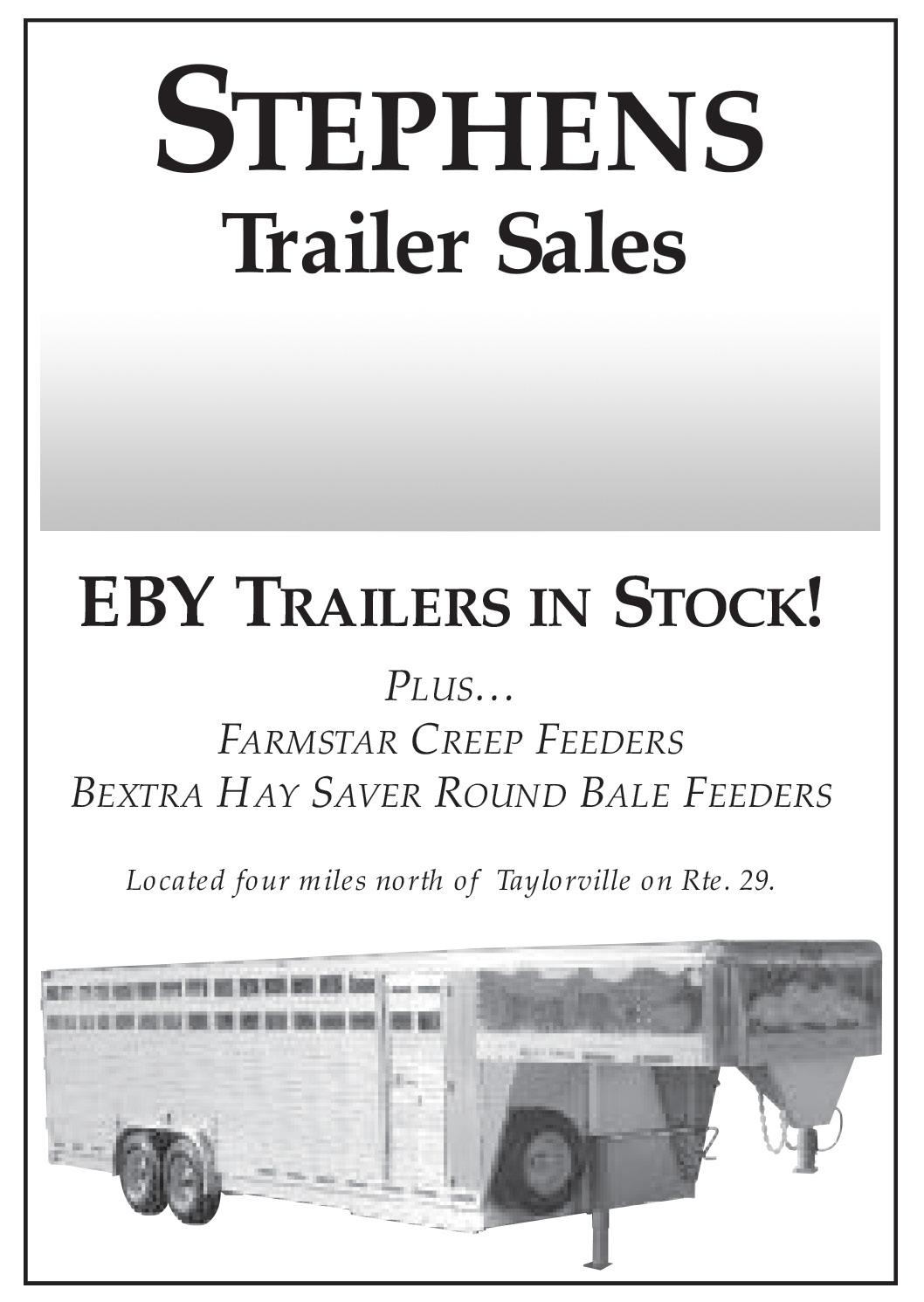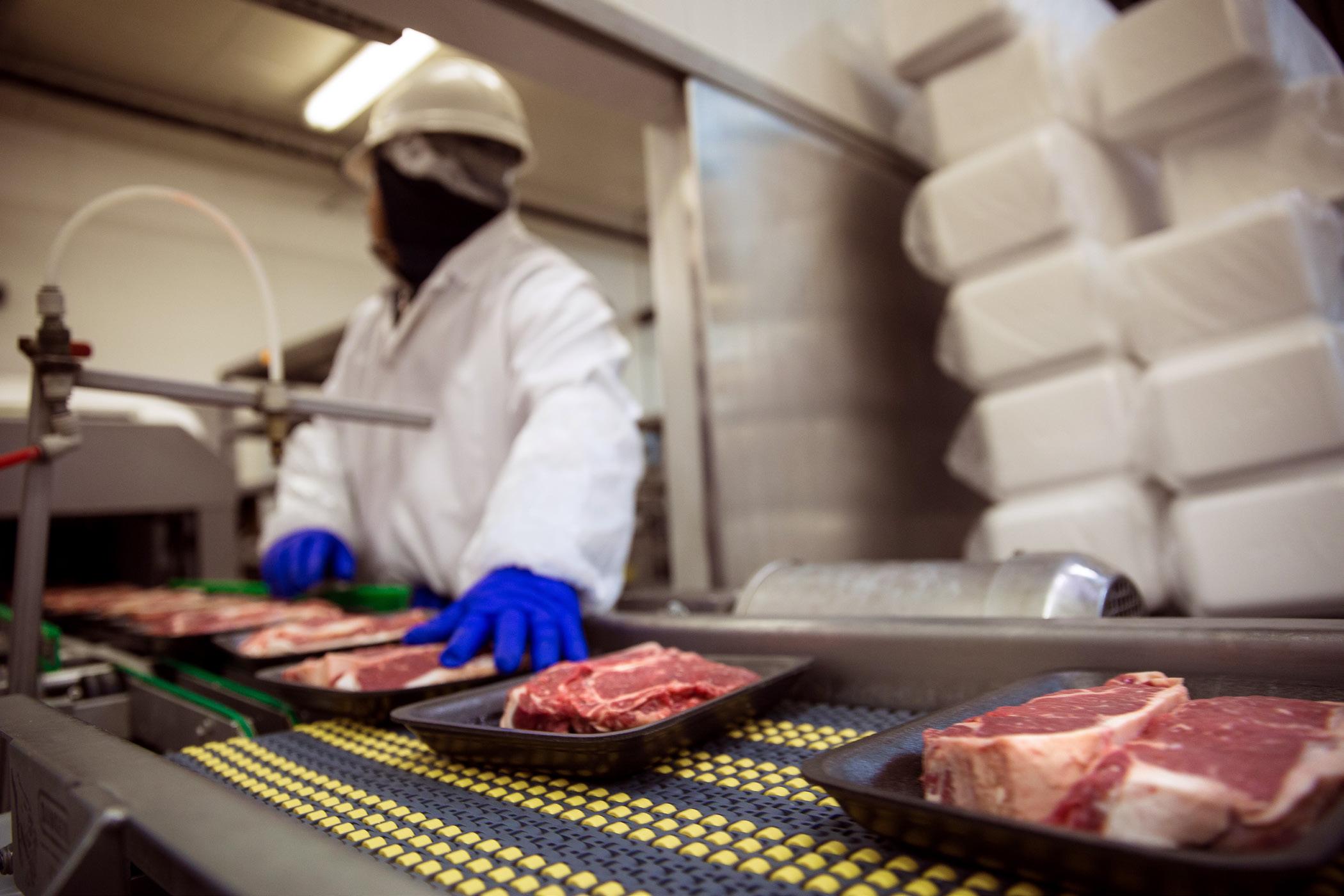
8 minute read
Market Transparency Survey Helps Guide Price Discovery Conversation
Market Transparency Survey
Helps guide Price discovery conversation
Advertisement
by Barb Anderson
For beef producers who depend on cash trade to drive their fat cattle sales, profitability has been increasingly challenging during the last 18 months. The Illinois Beef Association (IBA) recently polled producers to more effectively understand the issue and guide the discussion toward finding solutions.
“With the rising cost of inputs and the growing spread between what packers are making on a cutout value versus what producers receive, everyone is searching for the best path forward,” says Paul Walker, Ph.D. and IBA president. “All indications are we may be at a policy crossroad.”
Walker describes the finished cattle marketing system as an hourglass – many feedlot operators at the top selling fat cattle to a few beef packers in the middle, who merchandise beef to many purveyors, distributors and retailers at the bottom. Two supply/demand curves result; one for live cattle and one for retail beef with a disconnect between cattle selling and beef merchandising.
IBA Shares Transparency Survey Findings
IBA took the initiative to conduct a Market Cattle Price Discovery Survey earlier this summer to get a handle on how producers feel about this hourglass division in supply and demand. Beef producers from across the state provided their input to help set the stage to direct the work of IBA staff and leaders in the weeks ahead.
“The survey timing landed smack in the middle of a period where profitability was increasingly challenging for producers who depend on cash trade to drive sales of finished cattle. And the survey does confirm cattle marketing topics are front of mind for most producers,” says Josh St. Peters, IBA executive vice president.
About three-quarters of respondents feed or sell finished cattle, and 93 percent sell via cash transactions, including using live auctions about 49 percent of the time, along with 36 percent in negotiated direct packer arrangements and 26 percent use of other cash sale methods. Many producers utilize more than one procedure, so the percentages add up to more than 100%.
Four of every 10 respondents say they do not sell on a negotiated live basis to packers, while another four in 10 sell 50-100 percent in that manner. Sixty-one percent do not sell cattle direct to packers on a negotiated carcass grid, 62 percent do not sell direct to packers on a negotiated dressed basis and 60 percent do not use futures or options to manage risk on sales.
When it comes to market value opinions, 81 percent of respondents believe the cash market is not representative of an animal’s true value, while 89 percent say cash value should


more closely represent packer cutout value. Also, 73 percent do not want each industry segment regulated by the government while, at the same time, 56 percent do favor a government mandate that sets a minimum percent of a packer’s daily kill be purchased through the cash market. Two-thirds of producers prefer that any minimum requirement of the daily kill be done on a regional basis. Perhaps these responses reflect the frustration feedlot operators are facing regarding market price discovery.
St. Peters assesses that based on the survey findings, IBA members need increased transparency in marketing, primarily with the information flow on how cattle are being bought and sold by packers. He stresses there are many unknowns in the data USDA collects and doesn’t publish, and IBA members would be well served to have access to a contract library and information about alternative marketing agreements with packers and the financing details of how such contracts can be arranged. But involving the federal government in setting cash trade mandates is not an easy area of agreement for Illinois cattle producers.
“Opinions split pretty substantially,” says St. Peters. “A large portion of survey respondents want to see significant changes in the marketplace, but they stop short of desiring the government to control profit margins. They still want free market economics at play. It’s a complex issue.”
Furthermore, the majority of producers signal that they do not want a mandate that puts the floor and the ceiling in their profitability if it is controlled by the federal government.
“I think most of our producers still want freedom to operate in a market where they can manage their profit opportunities, be it a local sale barn or through negotiated sales to a packer’s cattle buyer,” he says.
Several Legislative Options in Discussion
National Cattlemen’s Beef Association (NCBA) working groups are weighing all the options regarding market transparency, including mandatory minimum negotiated cash purchases. Several bills also, have been introduced in Congress with various options to address the concerns.
“We are working proactively with our policy leaders inside NCBA, including the appointed working groups and the executive committee, to make sure that Illinois’ opinions are part of the national legislative priorities,” says Walker. “We are connecting with our own elected leaders from Illinois, including our U.S. Senators and Congressional delegation, to make sure that they understand the implications of cattle market transparency for the benefit of our producers.”
Bills introduced into Congress all have their own spin on how market value should be decided.
The Fischer Bill, also known as the Cattle Market Transparency Act, would restore a “regionally sufficient negotiated cash trade.” The bill mandates regional negotiated cash minimums and would put new reporting requirements in place that would provide producers with more market information. More than 40 percent of the IBA survey respondents support the concept.
The Grassley Bill would require a minimum of half of all



(217) 824-2815
stephenstrailers@yahoo.com www.stephenstrailers.com
weekly beef slaughter volume be purchased on the open or spot market with the goal of increasing competition and transparency among meat packers who purchase livestock directly from independent producers. Roughly 42 percent of survey respondents say they would support the Grassley Bill.
The Hartzler Optimizing the Cattle Market Act also champions creating mechanisms for greater price discovery and transparency. Under the act, USDA would “establish regionally sufficient levels of negotiated cash and negotiated grid trade within two years of enactment and include a mandatory packer report of the number of cattle, organized by cattle type, scheduled for delivery for slaughter each day for the next two weeks.” After three years, the bill mandates a cost-benefit analysis be done to determine whether regional mandatory minimums work.
“Illinois producers are already marketing at a pretty high rate of cash trade. We have seen reports that show the Illinois marketplace is likely near 48 percent cash trade for fat cattle,” says Walker. “This means that the mandated cash components of many of these bills would have little to no impact on our regional marketplace. We believe the opportunity for meaningful change is through the transparency and price transparency elements outlined in the Hartzler legislation.”
St. Peters agrees that the transparency components of the Hartzler bill are likely the strongest at bringing benefits to the Illinois market. He suggests that IBA may need to ultimately consider supporting the concept of adopting a mandatory ratio of cutout value to live cash price rather than requiring packers to purchase a minimum percent of daily kill as cash.
Looking Ahead to Lock in Profitability
As for next steps, St. Peters notes more than threequarters of survey respondents are interested in receiving additional education and information either through inperson or virtual workshops.
“Specifically, the survey shows that producers have a desire for more information regarding alternative marketing agreements and risk management tools,” says Walker. “We are committed to doing more to serve this need, including efforts underway to develop workshops and information that can bring a greater understanding of tools available. The goal is to help IBA members capture more profit and mitigate the challenges of a volatile marketplace.” IBA will maintain support of all opportunities for beef producers to diversify their marketing systems into the future, given desire for a strong, vibrant marketplace to serve packer demand.
“We are committed to growing this segment for the Illinois beef system,” says Walker.
Other endeavors to manage profitability and spread market risk include continuing support of local beef demand. A portion of Illinois cattle producers have already found success with local locker plants and regional processors in securing demand from consumers in their own communities. IBA is growing its local beef directory online to support the needs of local consumers looking for local producers who sell freezer beef.
“The majority of cattle in Illinois will still move through commercial channels, so diversification will remain important to growing a strong, vibrant beef value chain,” says Walker.

Red Angus Female Sale
Saturday, November 6 at 1 PM






At the farm, just west of Manchester, Illinois





Andras Stock Farm
Manchester, IL 62663 Contact us today to request a catalog: Will: 217-473-2355 | andraswill@gmail.com Steve: 217-473-2320 | steveandras@gmail.com
Selling:
Show Heifer Prospects Bred Heifers Spring Bred Cows Fall Cow/Calf Pairs
Several good Polled Hereford females will also sell!
Visit us online at www.andrasstockfarm.com Like us on Facebook @AndrasStockFarm!
2021 POLICY PRIORITIES
















